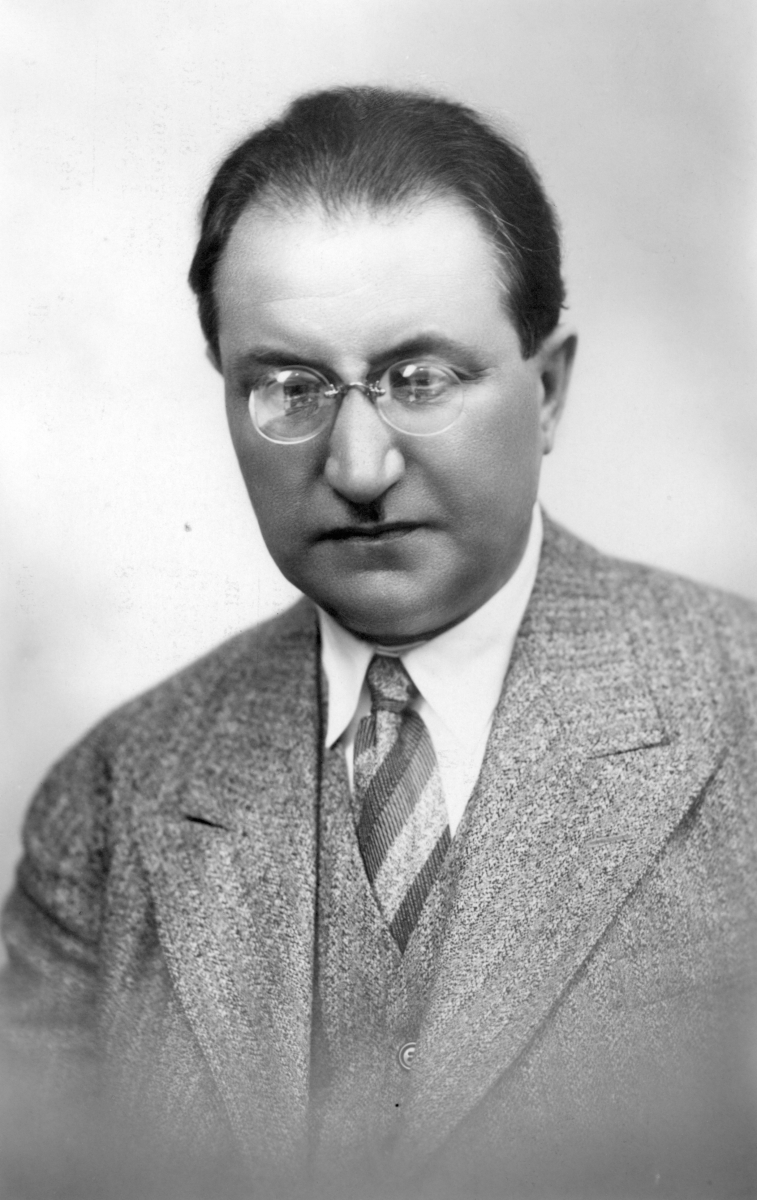
Villem Ridala
Villem Ridala (born Villem Grünthal, 30. V 1885 – 16. I 1942) was an Estonian poet and one of the most important authors of Estonian neo-romantic poetry in the beginning of the twentieth century. He was born on the island of Muhu in Kuivastu village and studied at Hellamaa Parish School and Kuressaare Gymnasium in Saaremaa from 1897–1905. He then went on to study Finnish philology, folklore, and the history of the Nordic countries from 1905–1909 at the University of Helsinki. He worked from 1910–1919 as an Estonian language teacher in Tartu at the historical Estonian Youth Education Association’s Secondary School for Girls, which was the first Estonian language gymnasium (founded in 1906). Additionally, he worked as an editor from 1910–1914 for the journal Eesti Kirjandus, and from 1914–1916 for Üliõpilasleht. In 1919, he went to Helsinki on a scholarship from the University of Tartu and remained at the University of Helsinki as a lecturer of Estonian language and literature from 1923–1942. In 1941, he defended his doctoral dissertation in the field of Baltic Finnic languages. He died, however, eight months later in Helsinki from serious illness.
Studies focused in a more classical direction at Kuressaare High School played a decisive role in Ridala’s formation as a poet, piquing his interest in languages and classical literature. Having a gift for languages, he learned a number of them through school courses as well as self-study, and took a particular interest in Italian, from which he later translated to Estonian. His first verses and also short prose attempts were published in the high school journal Nooreestlane, which was drafted by a nationally minded and culturally interested student group. Ridala’s print debut arrived in 1905 with the poem Talvine õhtu (‘Winter Night’) as part of the first album published by the literary group Noor-Eesti. With its quietly enchanting mood and poignant form, ‘Winter Night’ has remained his most famous poem.
Ridala’s more original and creatively important work were his youth lyrics, especially his first collection Villem Grünthali laulud (‘Villem Grünthal’s songs’, 1908). This collection contains predominantly impressionistic nature poetry characterized by an alert cognition and nuanced emotions as well as varied rhythms and innovative graphic layout. Natural depictions in his second collection Kauged rannad (‘The Faraway Beaches’, 1914) contain fewer personal emotions and more objective landscape details. The depictions are mostly constrained by classical forms and appear as static, but they still include some memorable views of the seaside that were characteristic to Ridala and inspired by the landscapes of Saaremaa and Muhumaa. In the collections that followed, the form of his poems become even more strict and the wording more complex. From the beginning, Ridala had used linguistically innovative words and forms, but over time, their abundance began to appear as artificial and even anachronistic.
In addition to lyrics, Ridala wrote also longer epic-leaning verses based primarily on folklore. The first of these published poems were Ungru krahv ehk Näckmansgrund (‘The Count of Ungru or Näckmansgrund’, 1915) and Merineitsit (‘The Mermaid’, 1918). The poem Toomas ja Mai (‘Toomas and Mai’, 1924) had the proportions of an epic and contained material mostly from Estonian epic folksongs, particularly from family ballads, and was written in the old Estonian runic verse. The ballad collection Sinine kari (‘The Blue Herd’, 1930) was also inspired by Estonian and Finnish folksongs. Because of their cumbersome structure and lack of dramatic development, Ridala’s verse epics did not gain much popularity, but they nevertheless complemented the poetic scene of the time in interesting ways.
Ridala also published studies on culture and literature, such as the essay Tõu küsimus (‘The Question of Breed’, 1915), Esteetika (‘Aesthetics’, 1919, inspired by the Italian Benedetto Croce), and a series on Estonian literary history for schools.
E. S. (Translated by M. M.)
Books in Estonian
Poems
Villem Grünthali Laulud. Tartu: Noor-Eesti, 1908, 70 lk.
Kauged rannad. Tartu: Noor-Eesti, 1914, 90 lk.
Ungru krahv ehk Näckmansgrund. Hiiu jutt suurest rahust VII loos, epiloogiga 67 stanzis. Tartu: Noor-Eesti, 1915, 30 lk.
Merineitsit. Muinaslooline poeem XX laulus. Tartu: Noor-Eesti, 1918, 82 lk.
Saarnak. Tartu: Noor-Eesti, 1918, 53 lk. [Poeem.]
Toomas ja Mai. Lugulaul orjaajast neljas loos. Tallinn: Tallinna Eesti Kirjastusühisus, 1924, 433 lk.
Tuules ja tormis. Kogu laulusid ja ballaada. Tartu: Noor-Eesti, 1927, 172 lk.
Sinine kari. Kogu ballaada ja legenda. Tartu: Noor-Eesti, 1930, 58 lk.
Meretäht. Tartu: Noor-Eesti, 1935, 116 lk.
Laulud ja Kauged rannad. Tartu: Noor-Eesti, 1938, 130 lk.
Villem Ridala. Koostanud Ain Kaalep. Tallinn: Valgus, 1969, 87 lk. [Sari ‘Väike luuleraamat’.]
Valitud värsid. Koostanud Oskar Kruus. Tallinn: Eesti Raamat, 1986, 166 lk.
Püha Rist. Toimetanud ja ees- ning järelsõna Ruth Mirov. Tallinn: Eesti Kirikute Nõukogu, 2005, 444 lk. [Poeem.]
Stories
Kalevipoeg. Tallinn: Kool, 1921, 109 lk. [Proosaümberjutustus.]
Non-fiction
Anna Haava. 50-aastase sünnipäeva puhul. Tartu: Eesti Kirjandus, 1914, 83 lk.
Tõu küsimus. Tartu: Postimees, 1915, 159 lk.
Esteetika. Tartu: Noor-Eesti, 1919, 78 lk.
Ringi mööda kodumaad. Tallinn: Maa, 1921, 107 lk.
Eesti kirjanduse ajalugu. Koolidele. Tartu: Noor-Eesti, 1922, 166 lk.
Eesti kirjanduse ajaloo lugemik. I–II jagu. Tartu: Noor-Eesti, 1923, 175 + 158 lk.
Eesti kirjanduse ajalugu. Koolidele. I jagu. Tartu: Noor-Eesti, 1924, 295 lk.
Eesti kirjanduse ajalugu. Koolidele. II. jagu. Tartu: Noor-Eesti, 1925, 304 lk.
Ernst Enno. Essee. Tartu: Postimees, 1925, 23 lk.
Eesti kirjanduse ajalugu. III. jagu. Tartu: Noor-Eesti, 1939, 335 lk. [Koolidele.]
Tõu küsimus. Koostanud Riho Grünthal ja Hando Runnel. Tartu: Ilmamaa, 2014, 467 lk.



